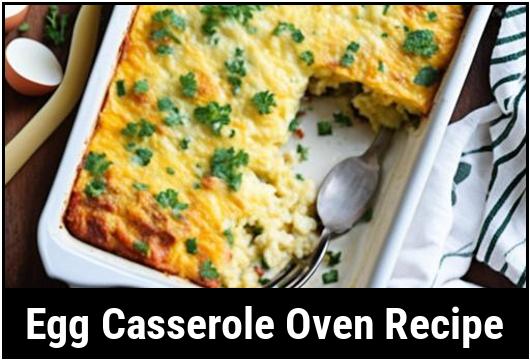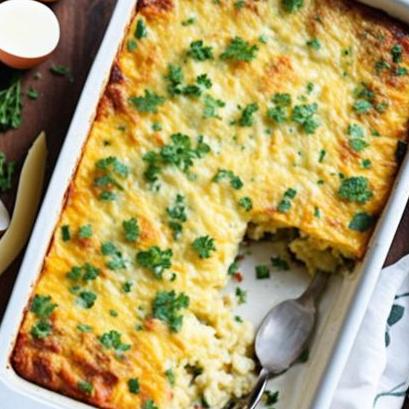
Egg Casserole Oven Recipe: The Ultimate Guide To A Delicious And Satisfying Meal
In this comprehensive and in-depth article, we will dive into the world of egg casserole oven recipes. Be prepared to enjoy a delightful culinary journey as we explore the fascinating food science behind this dish, provide you with valuable tips and tricks, offer variations to suit your preferences, guide you through the selection and cleaning process, and ensure your egg casserole is cooked to perfection. So, let’s get started!
The Fascinating Food Science Behind Egg Casseroles
Egg casserole is a unique dish that combines the protein-packed goodness of eggs with a delightful assortment of ingredients. When these ingredients are mixed together and baked in the oven, a magical transformation takes place. The heat causes the eggs to coagulate, turning from liquid to a smooth and creamy custard-like texture, while also binding the other ingredients together.
Eggs are also rich in proteins, vitamins, and minerals, making them an excellent option for a healthy and nutritious meal. They provide a complete source of protein, containing all the essential amino acids our bodies need. Moreover, eggs are a great source of vitamins B12 and D, as well as minerals like iodine, selenium, and choline.
Selecting the Perfect Ingredients
To ensure your egg casserole turns out absolutely scrumptious, it is crucial to select the right ingredients. Here are some guidelines to follow:
1. Eggs:
Always opt for fresh eggs. Check their expiration date and ensure there are no cracks in the shells. Organic and free-range eggs are preferable for enhanced flavor and quality.
2. Vegetables:
Choose a variety of colorful vegetables to add both nutritive value and visual appeal to your casserole. Consider options like spinach, bell peppers, mushrooms, onions, or zucchini.
3. Meat and Protein:
If you desire a heartier casserole, you can include cooked bacon, ham, chicken, or sausage. Vegans and vegetarians can substitute these with tofu, tempeh, or plant-based sausages.
4. Cheese:
Cheese adds a melty and savory element to your dish. Consider options like cheddar, mozzarella, or feta, but feel free to experiment with different types to suit your taste.
5. Seasonings and Herbs:
Adding herbs and spices like garlic powder, paprika, thyme, or parsley can further elevate the flavor profile of your casserole. Don’t shy away from experimenting with different combinations!
Cleaning and Preparation Guidelines

Now that you have your ingredients ready, it’s important to ensure that your cooking utensils and surfaces are clean and ready for use.
1. Oven-safe dish:
Select a suitable oven-safe dish for baking your casserole. Popular options include glass or ceramic baking dishes.
2. Preparing the dish:
Grease the dish with cooking oil or butter to prevent the casserole from sticking to the sides.
3. Preparing the ingredients:
Clean and chop your vegetables, and pre-cook any meat you plan to include. This will ensure that they are evenly distributed in your casserole and cooked to perfection.
Tips for a Perfect Egg Casserole
To achieve an egg casserole that is both beautiful and delicious, keep in mind the following tips:
1. Mixing the ingredients:
Thoroughly whisk the eggs to ensure a uniform mixture. This will prevent any clumps or unevenness in your casserole.
2. Layering technique:
When layering your ingredients in the baking dish, start with a base layer of vegetables and protein, followed by a sprinkling of cheese. Repeat this process until all the ingredients are used, finishing with a final layer of cheese.
3. Allowing ingredients to marinate:
Once you have mixed your ingredients and layered them in the baking dish, allow the mixture to rest for about 10-15 minutes. This will allow the flavors to meld together before baking.
4. Adjusting cooking time and temperature:
The cooking time and temperature may vary depending on the size and depth of your casserole dish. Follow the recipe guidelines, and be prepared to adjust accordingly. A general rule of thumb is to bake the casserole at around 375°F (190°C) for 30-45 minutes until the top is golden brown and the center is set.
Delectable Variations to Try

Egg casserole recipes are highly versatile, allowing you to experiment with a variety of ingredients and flavors. Here are a few exciting variations to consider:
1. Mediterranean Twist:
Enhance your casserole with ingredients like feta cheese, sun-dried tomatoes, Kalamata olives, and fresh basil.
2. Mexican Fiesta:
Add a kick to your casserole with ingredients such as diced green chilies, salsa, shredded Mexican cheese blend, and a sprinkle of chili powder.
3. Italian Inspiration:
Incorporate flavors reminiscent of Italy by adding ingredients like fresh mozzarella cheese, cherry tomatoes, basil leaves, and a drizzle of balsamic glaze.
Checking for Doneness
Determining the doneness of your egg casserole is crucial to achieving the perfect texture and flavor. Here are two methods you can use:
1. Knife Test:
Insert a knife into the center of the casserole. If it comes out clean, without any liquid or clumps clinging to it, your casserole is cooked through.
2. Jiggle Test:
Gently shake the baking dish. If the center of the casserole jiggles slightly but is set around the edges, it is likely done.
Rescuing an Overcooked or Undercooked Casserole
Even with the best intentions and techniques, sometimes mistakes happen. If you find yourself with an overcooked or undercooked casserole, don’t despair. Here are a few tips to help salvage your dish:
1. Overcooked Casserole:
If your casserole is overcooked and looks dry, you can try adding a small amount of sauce or gravy over the top. This will add moisture and enhance the overall flavor.
2. Undercooked Casserole:
If your casserole is undercooked in the center but the edges are set, simply return it to the oven for an additional 10-15 minutes. Keep a close eye on it to prevent further overcooking.
A Delicious Egg Casserole Oven Recipe to Savor
Finally, it’s time to share with you a mouth-watering egg casserole oven recipe to delight your taste buds. Follow these steps for a delicious and satisfying meal:
Ingredients:
-
8 large eggs
-
1 cup milk
-
1 cup chopped spinach
-
1/2 cup diced bell peppers
-
1/4 cup diced onions
-
1/2 cup cooked and crumbled bacon
-
1 cup shredded cheddar cheese
-
1 teaspoon garlic powder
-
1/2 teaspoon salt
-
1/4 teaspoon black pepper
-
Fresh parsley for garnish
Instructions:
-
Preheat your oven to 375°F (190°C) and grease a 9×13 inch baking dish.
-
In a large mixing bowl, whisk together the eggs and milk until well combined.
-
Add the chopped spinach, bell peppers, onions, bacon, and garlic powder to the bowl. Mix everything together until evenly distributed.
-
Season the mixture with salt and black pepper, adjusting according to your taste preferences.
-
Pour the mixture into the greased baking dish.
-
Sprinkle the shredded cheddar cheese evenly over the top of the mixture.
-
Bake in the preheated oven for 30-35 minutes or until the top is golden brown and the center is set.
-
Remove from the oven and allow it to cool slightly before cutting into squares.
-
Garnish with fresh parsley and serve hot.
Now, sit back, relax, and indulge in this delectable egg casserole that perfectly showcases the harmonious blend of flavors and textures. Enjoy it as a savory breakfast, brunch dish, or even for a quick weeknight dinner.
Remember, the beauty of egg casserole recipes lies in their versatility, so feel free to experiment with additional ingredients or personalize the recipe to suit your preferences.
Happy cooking and bon appétit!
Sources
FAQS On Egg Casserole Oven Recipe
What Ingredients Are Needed For An Egg Casserole Oven Recipe?
The ingredients typically include eggs, cheese, milk or cream, meat (such as bacon or sausage), vegetables (such as spinach or bell peppers), and seasonings (such as salt, pepper, and garlic powder).
Can The Ingredients Be Modified To Accommodate Dietary Restrictions?
Yes, the recipe can be modified to accommodate dietary restrictions such as using dairy-free milk alternatives or omitting the meat for a vegetarian option.
How Long Does An Egg Casserole Take To Bake In The Oven?
The cooking time can vary depending on the size of the dish and the oven temperature, but typically takes around 45 minutes to an hour at 350°F.
What Are Some Tips For Avoiding A Watery Egg Casserole?
To avoid a watery casserole, be sure to thoroughly drain any excess moisture from the vegetables before adding them to the dish. It’s also important to let the casserole cool down and set for a few minutes before serving.
Can An Egg Casserole Be Made Ahead Of Time?
Yes, an egg casserole can be made ahead of time and stored in the fridge for up to 2 days before baking. Simply cover the casserole dish with plastic wrap or aluminum foil and refrigerate until ready to bake.


